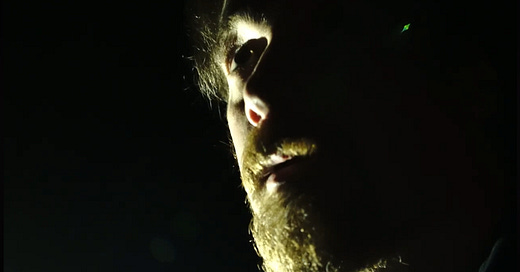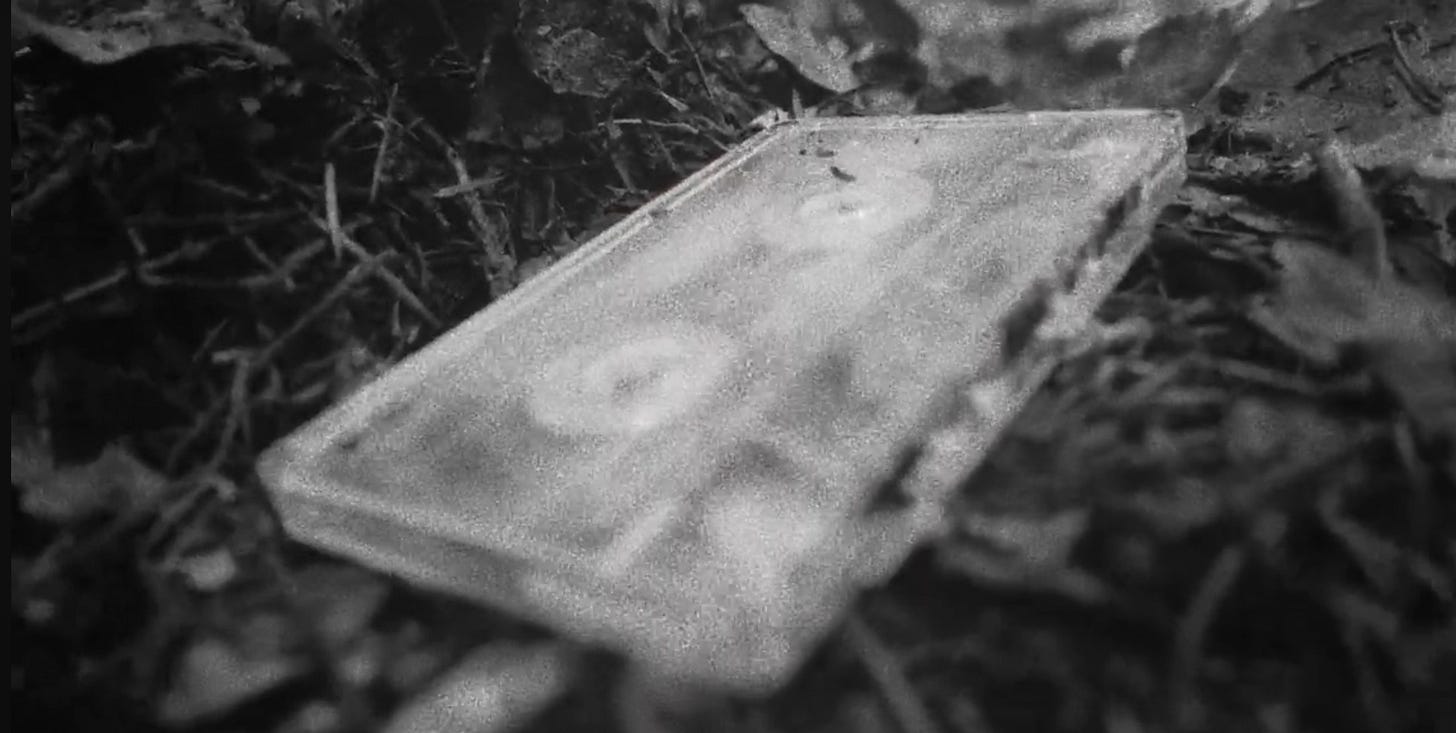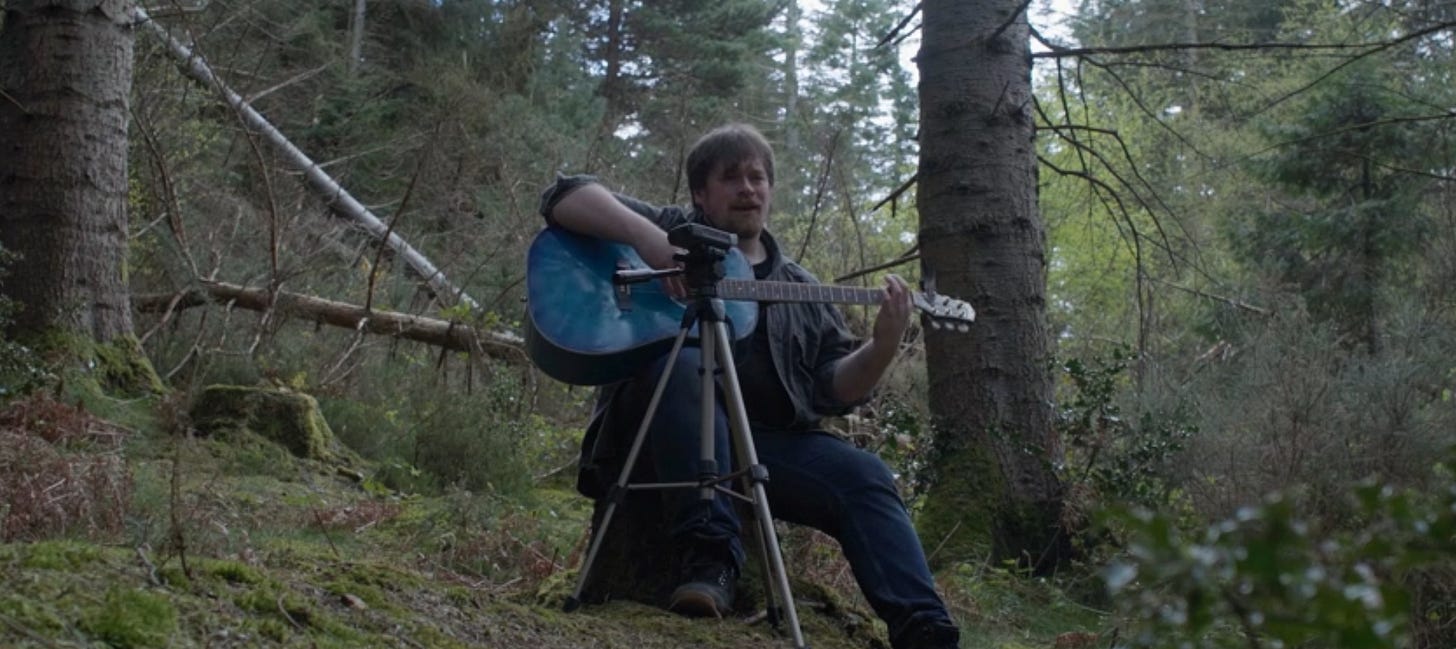REVIEW | Distort (2025) brings an Irish urban legend to life
The creepy found footage horror movie documents the story of an aspiring musician uncovering a mystery in the woods of Ireland.
Found footage feels like a fickle thing these days. It’s a subgenre of horror with a comparatively low barrier to entry. The simple handheld cameras and gritty analog filming style lends itself well to entry-level filmmakers looking to make their way into the genre. It allows new filmmakers with a knack for storytelling an avenue to shine.
That’s not to say it’s an easy style of filmmaking. In fact, it’s far easier to fall into the trap of overused tropes and gimmicks common to the subgenre. There’s an incredibly fine line between delivering an homage to the classics, and leaving your audience with the feeling of “I’ve seen this all before”.
As someone who adores found footage, there’s a lot of gems out there for those who love this style filmmaking if you’re willing to look for them. From director Richard Waters, Distort (2025) takes inspiration from many popular found footage movies to precede it, while still finding a way to create an effective story all its own.
Distort follows a man named James (played by James Devlin), an aspiring musician in Ireland who decides to record an album in the woods. In the name of art, he camps out for a few days armed with nothing but a tent, his guitar, and a camera. Along the way he begins to discover old cassette tapes that seem to have been hidden for him to find, stashed away under piles of dead leaves and sticks, along with a cassette player.
On the tapes, we meet a woman researching the urban legend of Neil O’Byrne, a man who terrorizes the woods with his vicious barking dog. The woman’s research seems to become a first-hand experience as she becomes trapped in the woods and stalked by this man.
James in due time begins to experience the same creepy encounters — a barking dog outside his tent at night, weird noises in the woods, and each morning a new set of leaf piles waiting for him. As you might expect, these issues escalate slowly through the runtime leading to a chaotic and creepy finale.
The film has the spirit of found footage darlings The Blair Witch Project (1999), and (in the third act) Horror in the High Desert (2021). However, it avoids relying too heavily on either for inspiration and finds its own unique style. We get a lot of wide shots as James plays his guitar for the audience, leaving us to constantly search the woods in the background for something we think might be coming. In close-ups, the camera subtly loses focus from James to the background, as if the lens is sensing something James (and the audience) can’t see yet. It’s a slow burn of a story, taking it’s time to build the tension and atmosphere as James continues to discover bits and pieces of what may be happening around him. The sound design is the real hero here, as you hear the dog barking in the night, the crunching of movement in the woods around him, and the odd whistling of what isn’t quite wind.
If Distort missteps slightly, it’s in one of the most common issues of found footage films. When it comes to the subgenre, there’s a question every story has to answer — and it has to do it twice. Why are they filming? It’s one of the cornerstones of making the film work, but yet it’s an area that a lot of filmmakers struggle to get quite right. First, why film to begin with? The characters need a reason to film. This is the easier part to nail down in an age of social media where people seem to enjoy filming everyone and everything in their lives. Often times, the answer is left at simply that. The characters want to film their journey to wherever.
We don’t really get much insight into why James is filming to begin with. Yes, we know he’s making his music in the woods, but the question of why he’s filming that process isn’t fully answered. Perhaps he’s doing what many musicians do these days by filming as much as possible to grow their audience. The film is also edited heavily, which gives it nearly a faux documentary B-roll feel at times, but it doesn’t fully lean into that angle at any point either. Again, due to the commonality of the obsession with filming everything, I’m not bothered much by that detail and it doesn’t derail the impact of the film.
This question inevitably comes around the second time when the events of the film really start to unfold. When things take a turn for the worse, why are they still filming? This is the part where a lot of films swing and miss, and you’ll see the reviews pile in saying, “Why not just drop the camera and run? Why not just leave?”
When sh*t is going down, why are they still filming? It’s a tough question to get right, because the answer has to be compelling enough to override the instinct to put the camera down and just get the hell out of there.
Distort never answers this question either. James continues to stay despite issues that would have made me pack my bags early on. Maybe it’s the need to complete this music and do what he came to do. Maybe it’s the intrigue of continuously discovering more tapes that drives him to continue documenting. In either case, the time does come in the end when the chaos really hits and James decides to make his run for it.
Overall, Distort is a strong entry into the subgenre, and makes great use of its relatively short runtime, coming in at only an hour and 16 minutes. There’s a lot of unanswered questions, but in the end credits scene, we get a hint that there’s more to come for the story of the woman and the legend of Neil O’Bryne. I hope we’ll get to see it.
If you want to check out Distort (2025) for yourself, it’s available streaming now on Found TV. Watch the official trailer below.
Not familiar with Found TV? It’s a brand new streaming service dedicated to found footage horror films. You can watch free with ads or ad-free for $4.99/mo. on their website or through the app on Roku, AppleTV, Amazon Fire devices, iOS, and Android. If you’re interested, you can check it out here: https://foundtv.com/
Are you an independent filmmaker? Contact Caley St. John at blackboxhorror@gmail.com to tell me about your film! I’d love to help promote your hard work!








